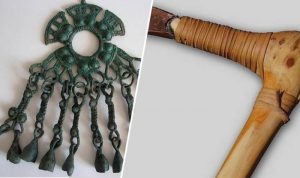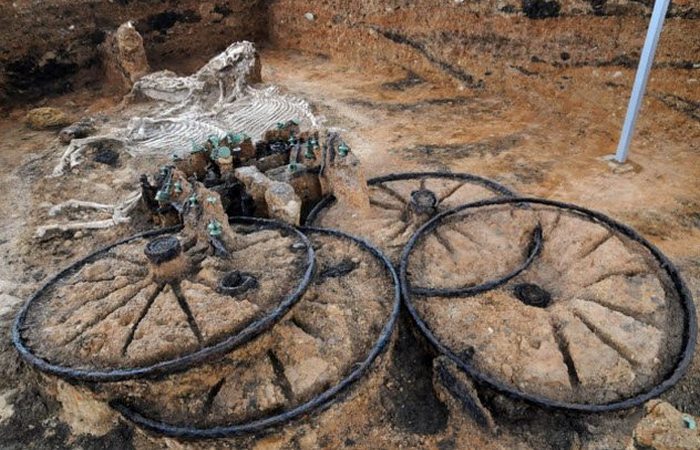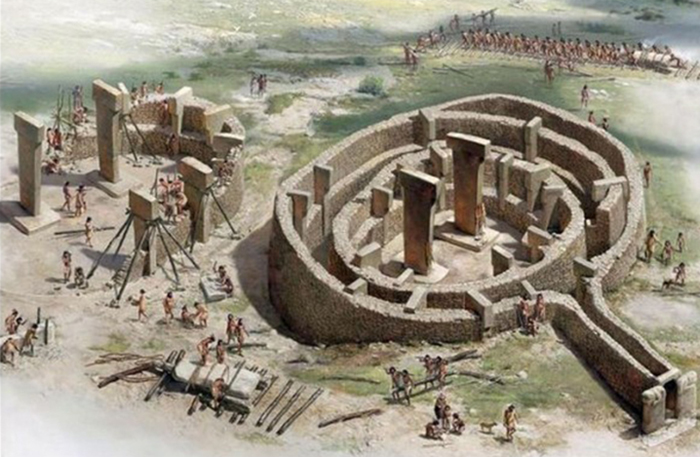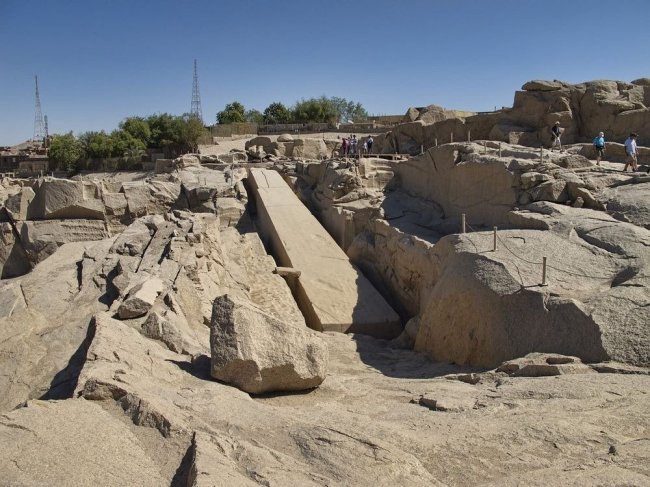10 copper artifacts that scientists discovered the secrets of the ancients
 Copper is one of the first metals with which people began to work around 5000 BC, during the so-called copper era (the chalcolithic period), when there was a radical transition from primitive Neolithic to Bronze stone technology. For millennia, copper has been the main engine of the global economy. The most common prehistoric metal artifacts from copper alloys still surprise archaeologists.
Copper is one of the first metals with which people began to work around 5000 BC, during the so-called copper era (the chalcolithic period), when there was a radical transition from primitive Neolithic to Bronze stone technology. For millennia, copper has been the main engine of the global economy. The most common prehistoric metal artifacts from copper alloys still surprise archaeologists.
1. The Lost Treasure of the Copper Scroll
On March 14, 1952, an archaeologist discovered a mysterious copper scroll that contrasted sharply with all the other Dead Sea scrolls found earlier in the Qumran caves. The material of the scroll, its author, script, language and style indicate that he ended up in cave number 3 at a different time than 14 other scrolls made of parchment and papyrus. According to Professor Richard Freund, “the copper scroll is probably the most unique, the most important and least understood among the Dead Sea scrolls.”
In 1955, without the ability to unfold a rusted scroll, researchers had to break an invaluable artifact in order to gain access to its contents. The language in this scroll is very little like the one on which the other Dead Sea scrolls are written. Copper roll dated from 25 to 100 years. AD contains a list of 64 places where you can find fabulous treasures. It cites huge caches of gold, silver, priestly clothes, etc. worth over a billion dollars at today’s prices.
2. Andean mask
In 2005, residents of La Quebrada in the Argentine Andes discovered an ancient copper mask, which essentially made it necessary to revise the history of metallurgy in pre-Columbian South America. The copper mask found in the mass grave dates from about 1414 – 1087 BC. In a mask 18 cm high, 15 cm wide and 1 mm thick, holes were made for the mouth, nose and eyes.
It was attached to the face with additional holes along the edge of the mask. Archaeologists believe that the ore for this 3000-year-old death mask was mined in the valley of Hualfin, which is located 69 km from the place of discovery. Currently, a large copper mine is located in this valley in the province of Catamarca.
3. Copper Atlantes
In March 2015, marine archaeologists announced the discovery of 39 bars of “Atlantic” copper in the wreckage of a shipwreck near Sicily. According to Plato, the metal “orichalc” was a reddish variety of copper, and was considered no less valuable than gold. Atlanta allegedly used it to give the temple of Poseidon its otherworldly glow. People have long discussed the possible composition of this alloy. Most modern scholars believe that it was an alloy of bronze with zinc, charcoal and copper.
Others believe that the orichalc was made on the basis of amber. Unfortunately, there was nothing mythical about the metal found in the 2600-year-old Greek ship. Copper probably came from Cyprus. From the fourth millennium BC Cypriot metallurgists produced several versions of copper, including its alloy with zinc and trace amounts of iron and nickel. Given the durability and resistance to fading of the alloy, it is highly valued when creating jewelry. To this day, Greek speaking Cypriots still refer to copper as Orihalku.
4. Blade trade
In 2016, archaeologists announced that the composition of the ancient bronze instruments in Sweden contained Mediterranean copper. These tools, ages 3,600 years old, are evidence of trade from afar in the Bronze Age. Probably, the Scandinavians traded their precious amber, which was valued at the level of gold, changing it to copper. Isotopic analysis showed that the metal came from Cyprus, Sicily, Sardinia and the Iberian Peninsula.
Researchers believe that these southern sources of metals did not serve as the basis of Scandinavian metallurgy, but rather were a “supplement” to local sources. Archaeologists now believe that they have discovered images of Mediterranean ships in the Swedish rock art of the Bronze Age. Interestingly, the images of ships are almost always accompanied by images of large bulls, which was also characteristic of ancient Hittite and Minoan painting. Similar images are also found on the territory of modern Southern Turkey.
5. Copper lagoon plate
In 1989, a man who dredged sand from the bottom of the Lumbang River discovered the oldest known written document in the Philippines. Dating back to 900 AD The copper plate measuring 20 by 30 centimeters was completely covered with text in an unknown language. The man who found her sold the copper plate to an antiques dealer. Only then did an ancient document attract the attention of researchers.



